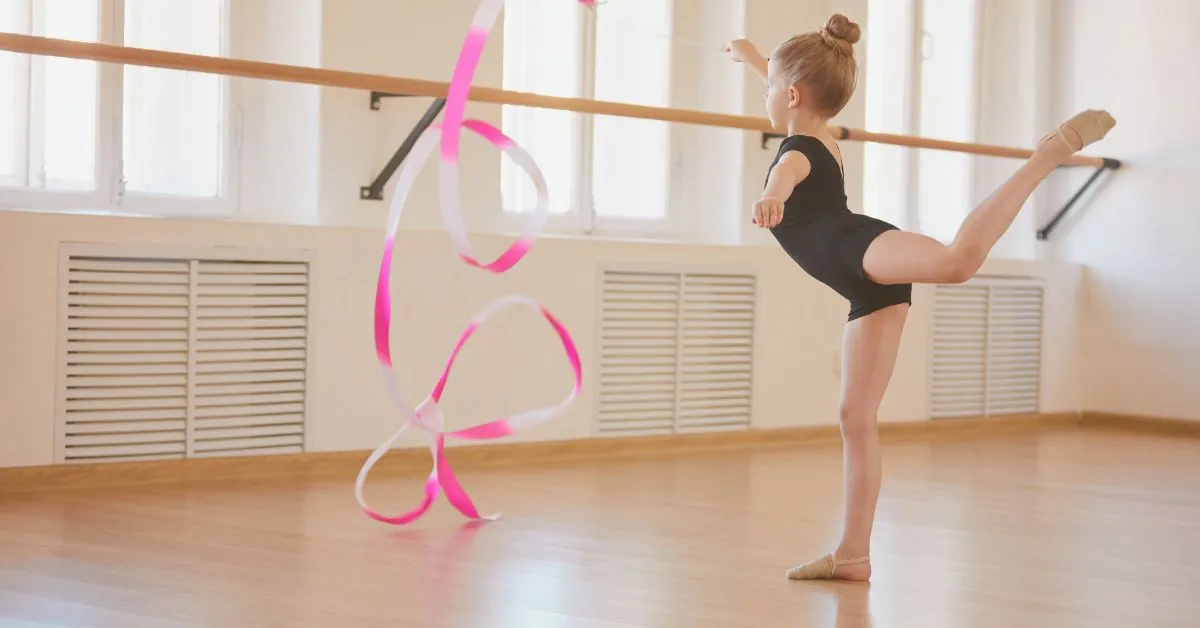Artistic Gymnastics Olympics: A Spectacle of Skill and Grace
Artistic Gymnastics Olympics is one of the most anticipated events at the Olympic Games, showcasing the incredible athleticism, grace, and dedication of gymnasts from around the world. This article delves into the rich history, notable champions, and key aspects of artistic gymnastics at the Olympics, highlighting its evolution and the unforgettable performances that have captivated audiences.
A Brief History of Artistic Gymnastics Olympics
Artistic gymnastics has been a part of the Olympic Games since the inaugural modern Olympics in 1896, held in Athens, Greece. Initially, only men competed in events such as the horizontal bar, parallel bars, pommel horse, and rings. The inclusion of women’s gymnastics did not occur until the 1928 Amsterdam Games, where they competed in a team event that included the vault, uneven bars, balance beam, and floor exercise. Since then, the sport has grown tremendously, evolving in complexity and popularity, and becoming one of the marquee attractions of the Summer Olympics. Over the years, the International Gymnastics Federation (FIG) has continued to refine the rules and scoring systems to maintain the sport’s fairness and excitement.
Notable Champions and Historic Performances
Simone Biles: A Gymnastics Legend
Simone Biles, often regarded as the greatest gymnast of all time, has left an indelible mark on the sport. Her performances in Rio 2016 and Tokyo 2020 have redefined what is possible in gymnastics. With a combined total of seven Olympic medals, including four golds, Biles has set new standards in difficulty and execution. Her extraordinary power, precision, and consistency across multiple apparatus have made her a household name and an inspiration to young athletes worldwide. In addition to her Olympic achievements, Biles has won 25 World Championship medals, the most in gymnastics history, demonstrating her dominance and longevity in the sport.
Sunisa Lee and the Rise of New Stars
Sunisa Lee, another standout from Team USA, captured the all-around gold medal at the Tokyo 2020 Olympics. Her victory was a testament to her consistency, precision, and resilience, especially in the absence of Biles in the all-around competition. Lee’s performances on the uneven bars and balance beam were particularly memorable, showcasing her technical prowess and artistic expression. She became the first Hmong American gymnast to win an Olympic gold medal, making her achievement even more significant and inspiring to many. Lee’s success has opened doors for more diversity in the sport, encouraging athletes from various backgrounds to pursue gymnastics at the highest level.
Historical Icons: Nadia Comăneci and Larisa Latynina
Nadia Comăneci, the first gymnast to score a perfect 10 in an Olympic event, is an enduring icon in the sport. Her performances at the 1976 Montreal Olympics revolutionized gymnastics, bringing unprecedented attention and admiration to the sport. Comăneci’s flawless routines on the uneven bars and balance beam earned her three gold medals, setting a new standard for excellence. Larisa Latynina of the Soviet Union remains one of the most decorated Olympians with a total of 18 medals, including nine golds, across three Olympic Games (1956, 1960, and 1964). Latynina’s versatility and dominance in both individual and team events showcased the depth of her talent and solidified her legacy as a gymnastics legend.
The Artistic Gymnastics Events
Women’s Events
- Vault: A dynamic event where gymnasts sprint down a runway, leap onto a springboard, and perform aerial maneuvers off the vaulting table. The vault requires explosive power and precise timing to execute complex twists and flips while maintaining perfect form in the air and upon landing.
- Uneven Bars: Athletes swing, release, and re-grasp the bars, showcasing their upper body strength, coordination, and timing. The routine includes transitions between the high and low bars, with gymnasts performing intricate skills that require significant body control and precision.
- Balance Beam: A test of balance and poise, gymnasts perform flips, turns, and jumps on a narrow beam only 10 centimeters wide. The beam routine demands exceptional concentration, as even the slightest wobble can lead to significant deductions. The gymnast’s ability to combine acrobatic skills with artistic elements enhances the overall presentation.
- Floor Exercise: A choreographed routine combining tumbling passes, dance elements, and acrobatics on a cushioned floor. The floor exercise allows gymnasts to express their personality through music and choreography, while showcasing their power and endurance through multiple tumbling sequences.
Men’s Events
- Floor Exercise: Similar to the women’s event, but with a greater emphasis on strength and power in the tumbling passes. Male gymnasts perform high-difficulty acrobatic skills and powerful tumbling sequences, demonstrating their athleticism and control.
- Pommel Horse: Gymnasts perform continuous circular movements and intricate hand placements on a horizontal apparatus. The pommel horse routine requires tremendous upper body strength, rhythm, and coordination to execute smooth and fluid movements without interruption.
- Still Rings: A display of upper body strength, gymnasts hold and transition between static and dynamic positions on the rings. The routine includes strength elements such as the iron cross and planche, as well as high-flying dismounts that require precision and control.
- Vault: Similar to the women’s event, emphasizing speed and explosive power. Male gymnasts execute high-difficulty vaults with multiple twists and flips, aiming for a controlled and stable landing.
- Parallel Bars: Athletes perform swings, balances, and releases between two parallel bars. The routine includes a combination of dynamic and static elements, showcasing the gymnast’s strength, control, and fluidity.
- Horizontal Bar: Gymnasts execute high-flying releases and swings, showcasing their grip strength and agility. The horizontal bar routine includes complex release moves and intricate hand changes, culminating in a high-difficulty dismount.
Scoring and Judging
Code of Points
The FIG (Fédération Internationale de Gymnastique) Code of Points is the rulebook governing how routines are scored. It includes criteria for difficulty (D-score) and execution (E-score), with deductions for mistakes and form errors. The total score is the sum of the D-score and E-score. The D-score reflects the difficulty of the elements performed, including their connections and combinations, while the E-score assesses the execution, artistry, and overall performance, with deductions for errors such as falls, balance checks, and form breaks.
Difficulty and Execution
Gymnasts aim to maximize their difficulty scores by incorporating high-risk elements into their routines. Execution is judged based on the precision and aesthetics of their performance, with deductions for wobbles, falls, and form breaks. The balance between difficulty and execution is crucial, as overly complex routines with poor execution can result in lower overall scores. Judges also consider the gymnast’s artistry, presentation, and the seamless flow of movements within the routine.
The Road to the Olympics
Qualification and Team Selection
Gymnasts qualify for the Olympics through a combination of World Championships, continental championships, and other international competitions. National teams are selected based on athletes’ performances in these events and their potential to contribute to team success. The qualification process ensures that only the best gymnasts from each country earn a spot at the Olympics, creating a highly competitive field.
Training and Preparation
Olympic gymnasts undergo rigorous training regimens, often starting from a young age. Training involves not only mastering skills on each apparatus but also building strength, flexibility, and mental toughness. Elite gymnasts typically train for several hours a day, focusing on perfecting their techniques, routines, and conditioning. Mental preparation is also a key component, as the pressure of competing on the world stage requires exceptional focus and resilience.
Memorable Moments in Olympic Gymnastics
The Perfect 10
Nadia Comăneci’s perfect 10 on the uneven bars in 1976 remains one of the most iconic moments in Olympic history. Her flawless routine was a milestone that inspired generations of gymnasts. The achievement was particularly significant because it highlighted the potential for perfection in a sport that is often subjective in its scoring. Comăneci’s performance elevated the standard of excellence in gymnastics and brought the sport to global prominence.
Team USA Dominance
The United States women’s gymnastics team has been dominant in recent Olympics, winning team gold in London 2012 and Rio 2016. Athletes like Simone Biles, Aly Raisman, and Gabby Douglas have become household names, inspiring young gymnasts around the world. The team’s success is a testament to the depth of talent and rigorous training programs in the U.S., as well as the dedication and resilience of the athletes.
The Return of Svetlana Boginskaya
Svetlana Boginskaya, known as the “Belarusian Swan,” made a remarkable comeback at the 1992 Barcelona Olympics, leading the Unified Team to gold and showcasing her enduring talent. Boginskaya’s elegance and grace, combined with her technical prowess, made her a standout performer. Her ability to return to the top of the sport after years away demonstrated the lasting impact of experience and determination in gymnastics.
The Impact of Artistic Gymnastics
Inspiring Young Athletes
Artistic gymnastics has a profound impact on young athletes worldwide. The discipline, dedication, and resilience required in the sport are valuable life skills. Many young gymnasts look up to Olympic champions as role models and aspire to follow in their footsteps. The stories of perseverance and triumph in gymnastics inspire young athletes to pursue their dreams, regardless of the challenges they may face.
Promoting Physical Fitness
Gymnastics promotes physical fitness, flexibility, and coordination. The sport’s emphasis on strength and conditioning contributes to overall health and well-being. The comprehensive training involved in gymnastics helps athletes develop a strong foundation of physical fitness that benefits them in various aspects of life, including other sports and daily activities.
Cultural Exchange and Unity
The Olympic Games provide a platform for cultural exchange and unity. Athletes from diverse backgrounds come together to compete, fostering mutual respect and understanding. Gymnastics, with its universal appeal, plays a significant role in this exchange, highlighting the beauty of human movement and the shared pursuit of excellence. The camaraderie and sportsmanship displayed by gymnasts at the Olympics exemplify the spirit of the Games and promote a sense of global community.
Conclusion
Artistic gymnastics Olympics is a celebration of human potential, showcasing the beauty, strength, and artistry of the world’s best gymnasts. From its early days to the present, the sport has evolved and grown, captivating audiences with unforgettable performances and inspiring future generations. As we look forward to the next Olympic Games, the legacy of artistic gymnastics continues to inspire and elevate the human spirit. The sport’s rich history, remarkable athletes, and memorable moments remind us of the extraordinary capabilities of the human body and the enduring appeal of the Olympic ideal.
FAQs
When did artistic gymnastics first appear in the Olympics?
Artistic gymnastics debuted in the inaugural modern Olympics in 1896.
When were women first allowed to compete in Olympic gymnastics?
Women first competed in Olympic gymnastics at the 1928 Amsterdam Games.
Who is considered the greatest gymnast of all time?
Simone Biles is often regarded as the greatest gymnast of all time.
What are the main events in women’s artistic gymnastics?
The main events are vault, uneven bars, balance beam, and floor exercise.
What are the main events in men’s artistic gymnastics?
The main events are floor exercise, pommel horse, still rings, vault, parallel bars, and horizontal bar.






